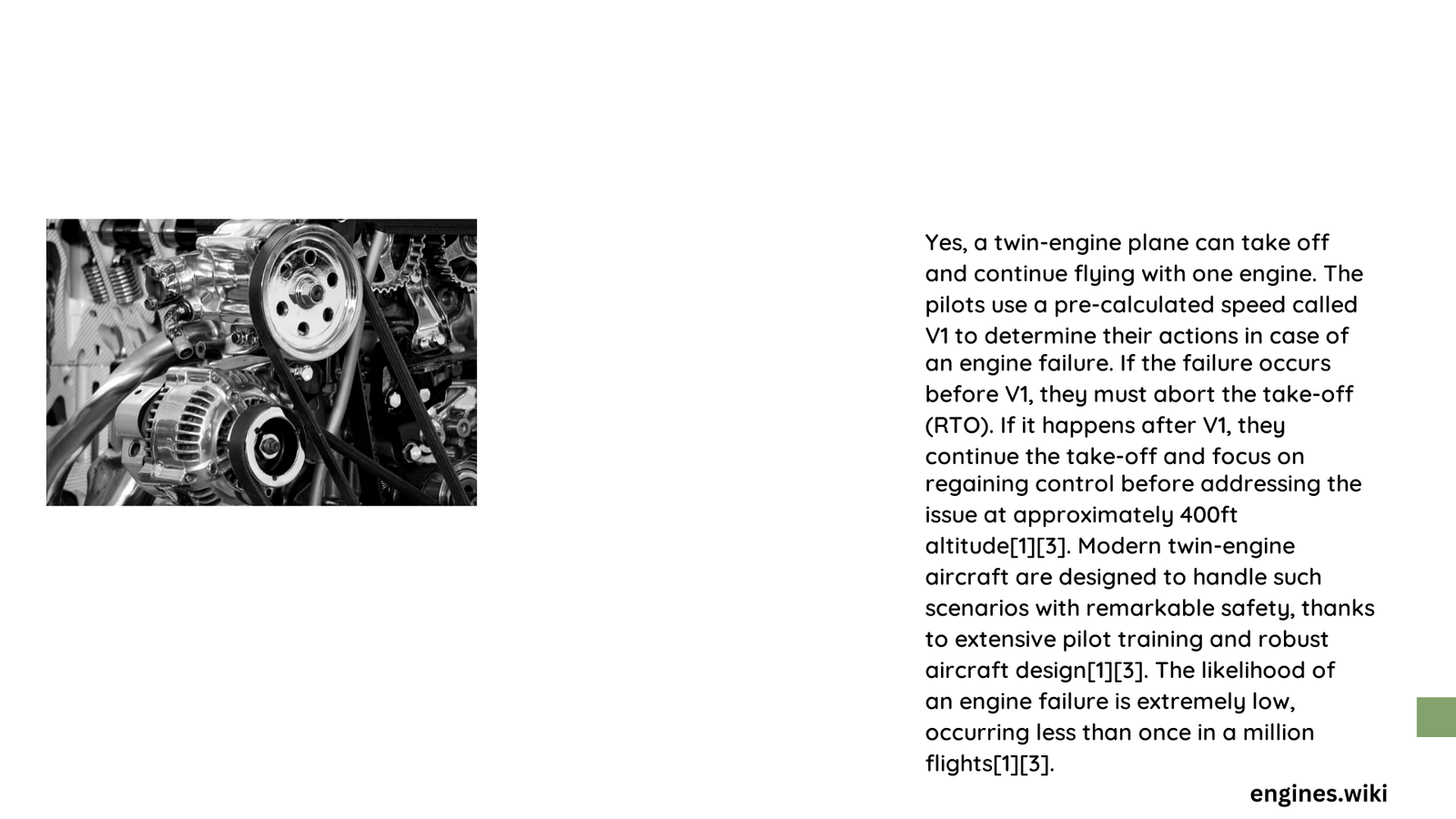Modern commercial and multi-engine aircraft are engineered with sophisticated safety mechanisms that allow controlled takeoff and flight even after a single engine failure. While technically possible under specific conditions, successful one-engine takeoff depends on multiple complex factors including aircraft weight, runway length, environmental conditions, and pilot expertise. The ability to continue flight safely requires precise calculations and adherence to strict aviation safety protocols.\n\n## What Determines a Plane’s Ability to Take Off with One Engine?\n\nMulti-engine aircraft are designed with redundancy and safety features that enable potential takeoff and continued flight after an engine failure. However, the success depends on several critical parameters:\n\n### Performance Thresholds for Single-Engine Takeoff\n\n| Performance Metric | Requirement |\n|——————-|————-|\n| Climb Gradient | Minimum 1.5% |\n| Obstacle Clearance | 50-foot minimum |\n| Thrust Reduction | 50-80% loss |\n\n### Key Factors Influencing One-Engine Takeoff\n\n1. Aircraft Weight
– Lighter aircraft have higher chances of successful single-engine takeoff
– Weight directly impacts climb performance and thrust requirements\n\n2. Runway Characteristics
– Sufficient runway length
– Dry and stable surface conditions
– Minimal environmental obstacles\n\n3. Pilot Expertise\n\n- Extensive training in asymmetrical thrust management\n- Quick recognition and response to engine failure\n- Understanding critical speed thresholds\n\n## How Do Pilots Manage Engine Failure During Takeoff?\n\nPilots follow rigorous protocols when confronting potential engine failure:\n\n- Immediate Recognition: Identify engine failure at specific speed (V1)\n- Decision Making: Continue or abort takeoff based on precise calculations\n- Control Mechanisms:\n – Retract flaps and landing gear\n – Feather the non-functioning engine\n – Adjust power and aircraft trim\n\n## What Are the Technical Limitations of Single-Engine Takeoff?\n\nTechnical constraints significantly impact single-engine takeoff potential:\n\n- Reduced climb performance (80-90% decrease)\n- Limited service ceiling\n- Increased control challenges due to asymmetrical thrust\n- Environmental factors like altitude and temperature\n\n## Can All Aircraft Perform Single-Engine Takeoff?\n\nNot all aircraft are equally capable:\n\n- Large commercial jets: Higher probability of successful takeoff\n- Light twin-engine aircraft: Limited single-engine performance\n- Specific certification requirements vary by aircraft type\n\n## Practical Recommendations for Pilots\n\n- Conduct thorough pre-flight performance calculations\n- Understand specific aircraft limitations\n- Maintain continuous training in emergency procedures\n- Always prioritize passenger and crew safety\n\n## Conclusion\n\nWhile technically possible under controlled conditions, single-engine takeoff remains a complex and risky maneuver requiring exceptional skill, precise engineering, and comprehensive safety protocols.\n\n### References:\n- FAA Safety Guidelines\n- NTSB Aircraft Performance Reports\n- International Civil Aviation Organization Standards

